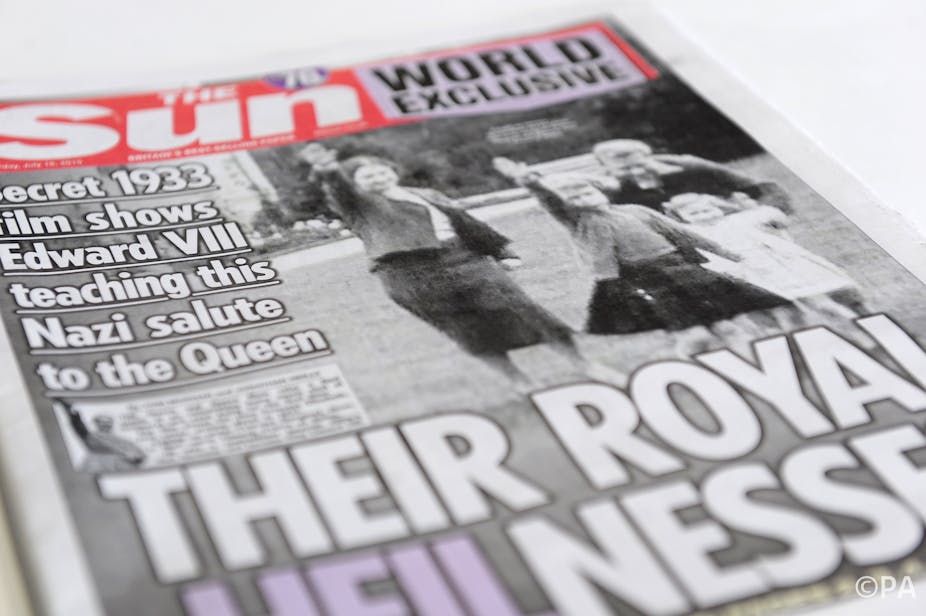The debate about the access (or lack thereof) to the royal archives prompted by The Sun’s publication of a very small Princess Elizabeth performing a Nazi salute conjures up for me a certain sense of déjà vu. Because 20 years ago, the archives of the British intelligence services were surrounded by a similar smokescreen. And it caused the same sort of frustration to historians.
I began teaching an undergraduate module about the history of the British intelligence community around this time and would tell my students at the outset that essentially this was a course about “gossip” and what we could learn from “bad books” – the sort of brightly-coloured paperbacks that used to populate airport bookshops, promising shocking revelations about the glamorous world of spying.
The refusal of the intelligence agencies to release documents about their activities meant that beyond a few official accounts of the World War II and some pioneering works by the likes of Christopher Andrew and Richard Aldrich, there was very little work on British intelligence that resembled conventional academic history. The intelligence writer Stephen Dorril once described his work as a kind of “archival archaeology” – making sense of the incomplete scraps of information that reached the public domain, sometimes because government censors had simply overlooked them.
More intelligent
Since then intelligence history has changed out of all recognition. In no small measure this was because, by the end of the 1980s, parts of the intelligence community had realised that an insistence on absolute secrecy was counter-productive. It meant that the public only learned about their activities from official inquiries into their failures – and from the often ill-intentioned and ill-informed testimonies of former employees, keen to fight out old internal battles and rake over ancient grievances.
The farcical and ultimately futile attempt to prevent the retired MI5 officer, Peter Wright, from publishing his memoir Spycatcher, helped to persuade the security service to change tack. Since the 1990s it has sanctioned the gradual release of its archives. This has allowed it to boast about its achievements and to put its failures into proper historical perspective. Indeed, it has achieved the remarkable feat of making intelligence history “boring” by encouraging historians to treat the intelligence community as just another part of the administrative framework of the British state (few sets of papers are quite as dull as the minutes of the Joint Intelligence Committee).
So the current silly-season sensation of the little princess’s Nazi salute shows just how much the Palace can learn from the intelligence community.
The majority of books about the contemporary monarchy bear a striking resemblance to the intelligence literature of the 1980s. Like the pre-1990s intelligence community, the Palace places entirely unreasonable restrictions on the work of professional scholars. It prohibits all but a small handful of “authorised” writers from viewing papers in the Royal Archives relating to the current reign.
In the dying days of Gordon Brown’s administration, it also managed to negotiate an absolute exemption from the Freedom of Information Act. for all correspondence with government relating to the Queen, the heir to the throne and the second-in-line. This blanket of censorship covers not merely official files in the National Archives dating as far back as the 1950s, but also private collections of papers such as those of Anthony Eden at the University of Birmingham, and Harold Macmillan and Harold Wilson in the Bodleian Library, Oxford.
As a consequence, what we know about this fascinating and hugely significant part of the British state still consists mostly of reheated gossip, self-interested briefings from a range of current and former royal flunkeys, and tabloid revelations. And since the tabloids are largely interested in charting the misdemeanours of the royals (apparently from as far back as a 1930s home movie), this poses a real problem for the Palace’s image merchants.
Stubborn secrecy
This obsessive secrecy also impedes an informed and rational discussion about the nature of constitutional monarchy. In many respects, we know far less about how this institution operated in our lifetimes than our grandparents did. The 1950s saw the publication of official biographies of George V by Harold Nicolson (1952) and of George VI by John Wheeler-Bennett (1958). Both authors were under strict instructions to exercise discretion about the private lives of the Queen’s father and grandfather. They were, however, able to be fairly candid about their political attitudes and interactions with government. The sheer longevity of the Queen means we have no such authoritative accounts of the political role of the Palace in the 1960s or 1970s.
Some of those who make a living peddling royal gossip have been quick to defend the Palace’s refusal to make its papers more freely available, arguing – ironically – that the royal family has a right to privacy. Yet it is precisely the mixture of the personal and the political that makes constitutional monarchy so intriguing. And for the past 60 years it has been impossible to disentangle the institution of monarchy in the UK from the remarkable personality of the Queen herself.
A measured and duly sensitive policy of opening up royal papers from the current reign would be in everyone’s interests. It would allow the monarchy to become the object of serious historical investigation rather than simply gossip and scandal. Isn’t it time we stopped learning our royal history from The Sun?

